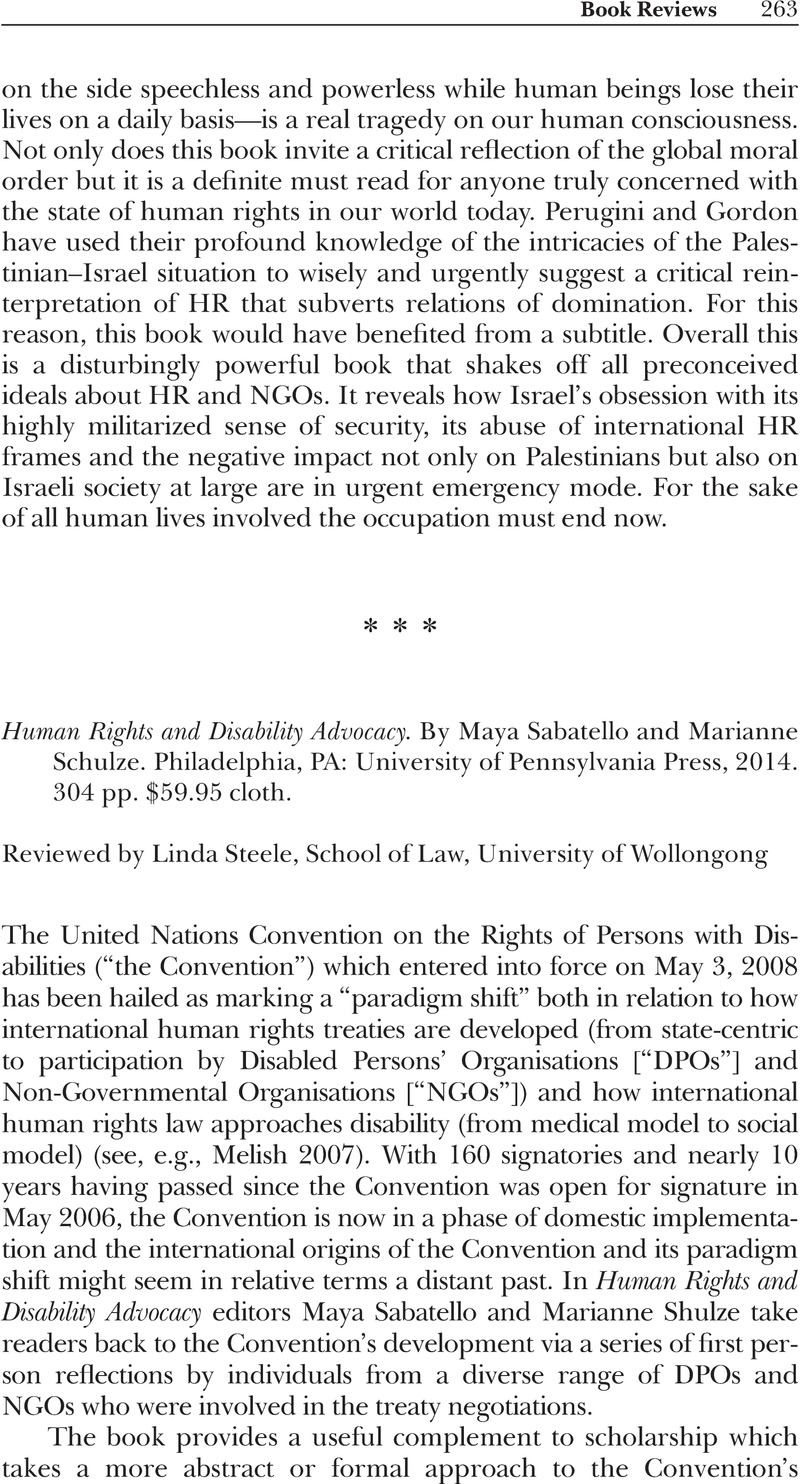No CrossRef data available.
Article contents
Human Rights and Disability Advocacy. By Maya Sabatello and Marianne Schulze. Philadelphia, PA: University of Pennsylvania Press, 2014. 304 pp. $59.95 cloth.
Review products
Human Rights and Disability Advocacy. By Maya Sabatello and Marianne Schulze. Philadelphia, PA: University of Pennsylvania Press, 2014. 304 pp. $59.95 cloth.
Published online by Cambridge University Press: 01 January 2024
Abstract
An abstract is not available for this content so a preview has been provided. Please use the Get access link above for information on how to access this content.

- Type
- Book Reviews
- Information
- Copyright
- © 2016 Law and Society Association.
References
Ben-Moshe, Liat, Chris, Chapman, & Carey, Allison C., eds. (2014) Disability Incarcerated: Imprisonment and Disability in the United States and Canada. New York: Palgrave Macmillan.CrossRefGoogle Scholar
Erevelles, Nirmala (2011) Disability and Difference in Global Contexts: Enabling a Transformative Body Politic. New York: Palgrave Macmillan.CrossRefGoogle Scholar
Melish, Tara J. (2007) “The UN Disability Convention: Historic Process, Strong Prospects, and Why the US Should Ratify,” 14 Human Rights Brief 43–47.Google Scholar
Pisani, Maria, & Shaun, Grech, eds. (2015) Special issue “Disability and Forced Migration,” Disability and the Global South. Vol. 2, Valletta, Malta: The Critical Institute.Google Scholar
Soldatic, Karen, & Helen, Meekosha, eds. (2014) The Global Politics of Impairment and Disability: Processes and Embodiments. London: Routledge.Google Scholar


